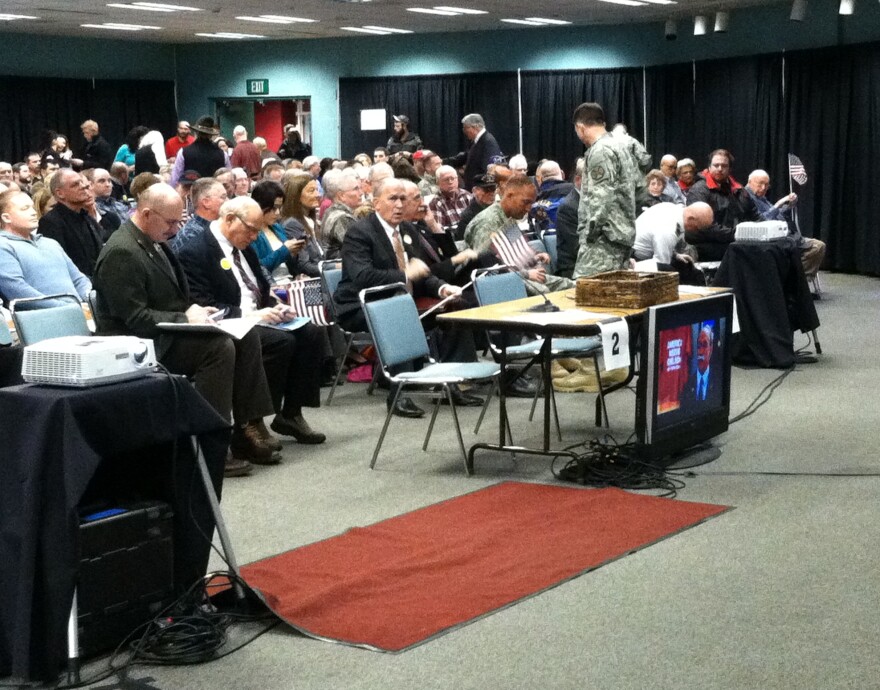Hundreds of Fairbanks-area residents and a platoon of elected officials turned out Tuesday to tell a delegation of Army officials why they shouldn’t reduce the number of soldiers stationed in Alaska. Many of those who spoke emphasized that Alaska has something that no other state can offer – its location.
More than 300 people packed the Carlson Center’s Pioneer Room to explain why the Army should not move up to 5,800 soldiers from Fort Wainwright as part of a plan to shrink the service’s presence in Alaska by more than 11,000 troops.
Many, like Gov. Bill Walker, emphasized Alaska’s strategic location adjacent to Asia and, over the North Pole, Europe. Walker recounted how his mentor, former Gov. Wally Hickel, often reminded him about Alaska’s place in the world.
“He would say, ‘You have to look at Alaska from the top down. Don’t look at a surface map, look at a globe, and you see how we relate to the rest of the world.’ ”
Walker had just flown in to Fairbanks from Washington, D.C., where he’d been attending the National Governor’s Association meeting. He says while there he’d met with Army Chief of Staff Gen. Ray Odierno and other senior service officials to talk about the proposed troop cuts. He says he suggested that, given changes under way in the Arctic, the Army instead should be considering bolstering its presence here.
“The Arctic is going to be developed significantly,” Walker said. “We need to have a bigger presence here on the military side, not a lesser presence.”
Many of those at the meeting touted Alaska’s geographic advantages and its network of enormous training ranges and uncluttered airspace. Including Fairbanks state Rep. Steve Thompson, speaking by videoteleconference from Juneau.
“It comes down to location, location, location,” Thompson said.

Several other state officials, and members of Alaska’s congressional delegation, emphasized the need to preserve the Alaska-based Stryker Brigade’s ability to deploy quickly and fight, as proven in Iraq and Afghanistan.
Sen. Lisa Murkowski reiterated that point via videoteleconference link from Washington, as she did Monday night during the Army officials’ first Alaska meeting in Anchorage.
“Our Army can get where it needs to go from Alaska faster than anywhere else,” she said.
Sen. Dan Sullivan, also speaking by videoteleconference, reminded those at the meeting how community support helped convince Air Force officials to reverse a decision to remove a squadron of F-16 fighters from Eielson Air Force Base. And to put Eielson at the top of the list of bases where the service’s new-generation F-35 fighter would be based. Sullivan says Air Force Chief of Staff Gen. Mark Welsh assured him that plan is on track.
“The first of Alaska’s F-35s should arrive on schedule at Eielson Air Force Base late in 2019,” Sullivan said.
Meanwhile, Congressman Don Young says he’s optimistic that lawmakers and President Obama will find a way to get around the 2011 budget deal that’s forcing the Pentagon to make such big cuts.
“I believe we can do this,” Young said. “I believe Congress is going to work very hard to make sure it happens.”
Obama called on Congress to reverse the automatic, so-called “sequestration” spending cuts when he submitted his nearly $4 trillion federal budget proposal earlier this month. This year’s round of sequestration budget cuts is scheduled to take effect Sunday.



